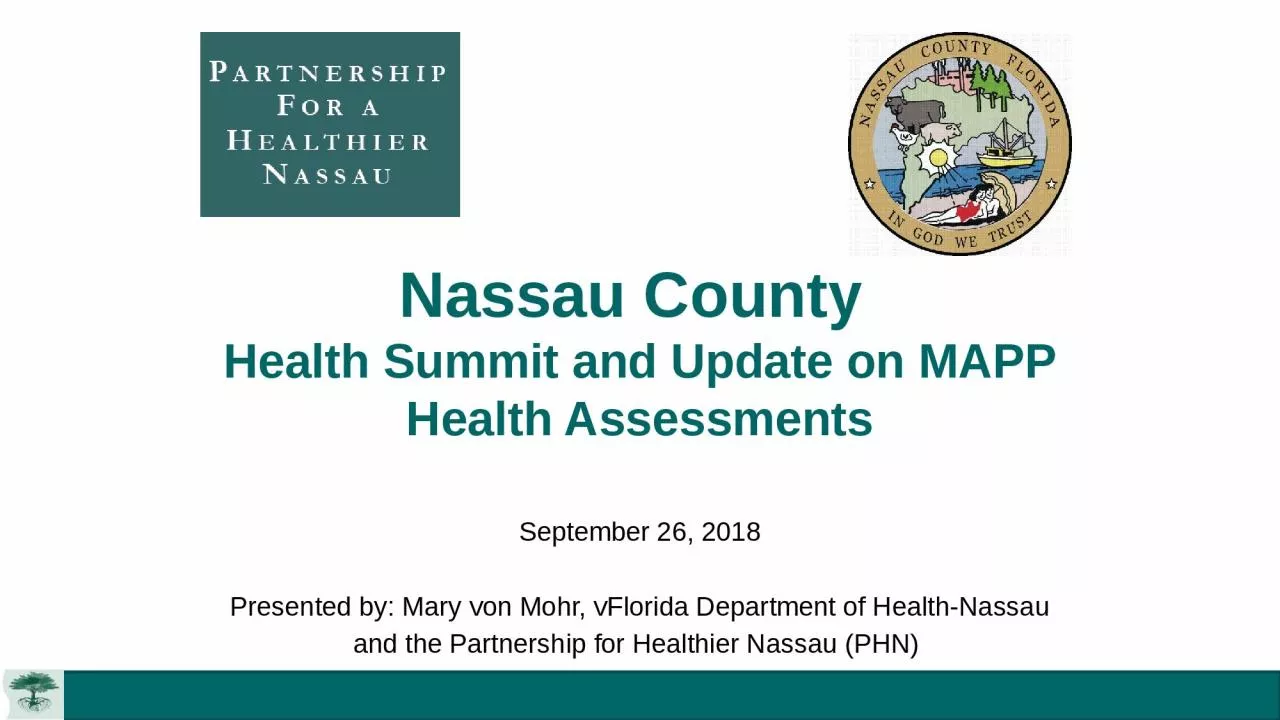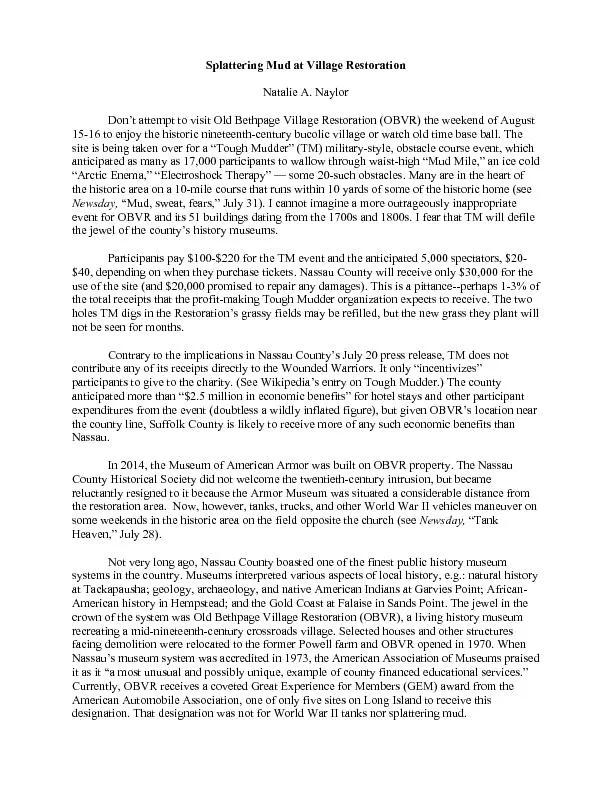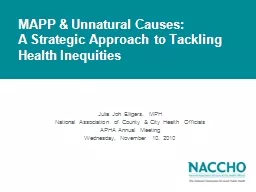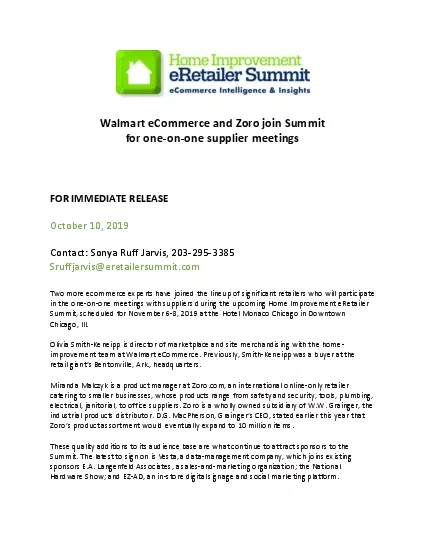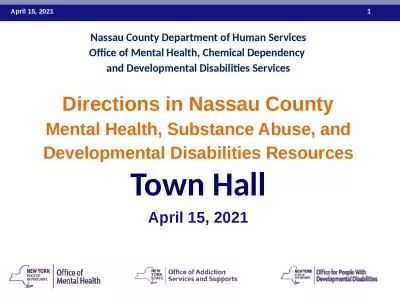PPT-Nassau County Health Summit and Update on MAPP Health Assessments
Author : ash | Published Date : 2024-03-13
September 26 2018 Presented by Mary von Mohr vFlorida Department of HealthNassau and the Partnership for Healthier Nassau PHN Meeting Agenda 100200 Nassau Health
Presentation Embed Code
Download Presentation
Download Presentation The PPT/PDF document "Nassau County Health Summit and Update ..." is the property of its rightful owner. Permission is granted to download and print the materials on this website for personal, non-commercial use only, and to display it on your personal computer provided you do not modify the materials and that you retain all copyright notices contained in the materials. By downloading content from our website, you accept the terms of this agreement.
Nassau County Health Summit and Update on MAPP Health Assessments: Transcript
Download Rules Of Document
"Nassau County Health Summit and Update on MAPP Health Assessments"The content belongs to its owner. You may download and print it for personal use, without modification, and keep all copyright notices. By downloading, you agree to these terms.
Related Documents

